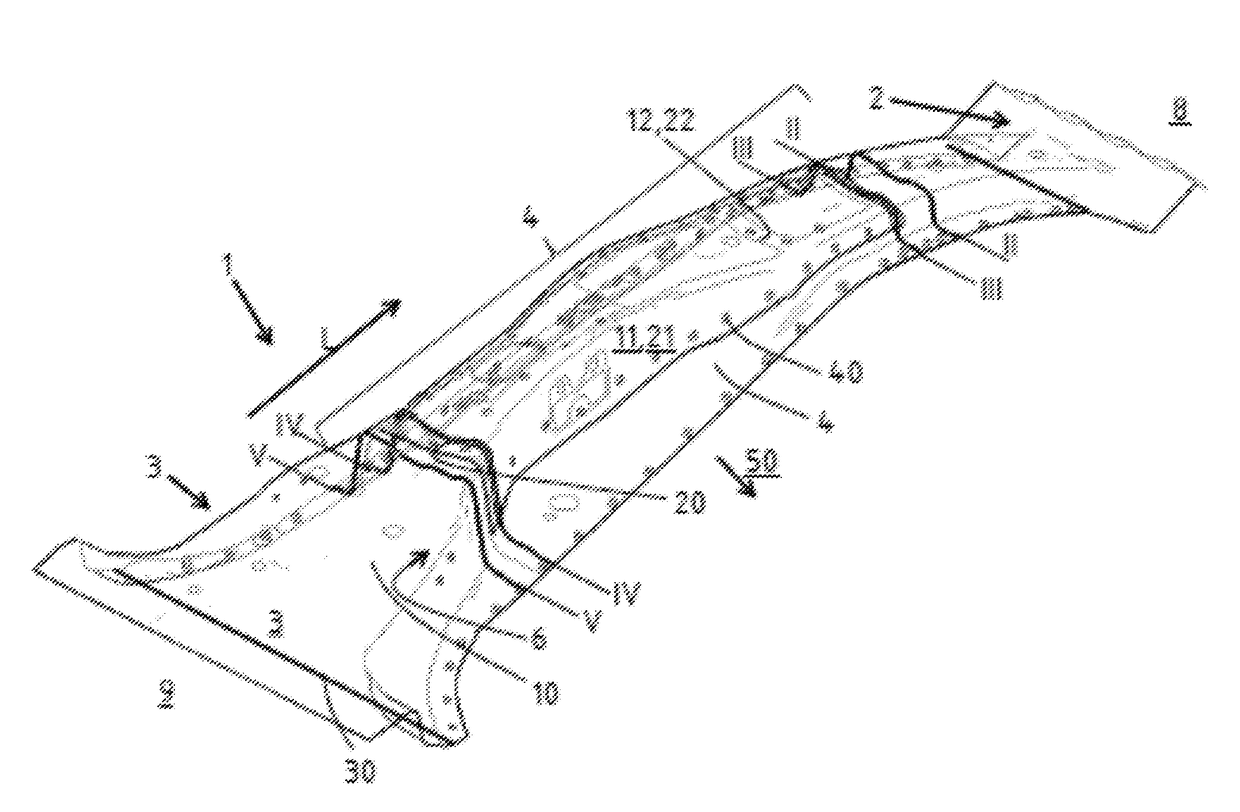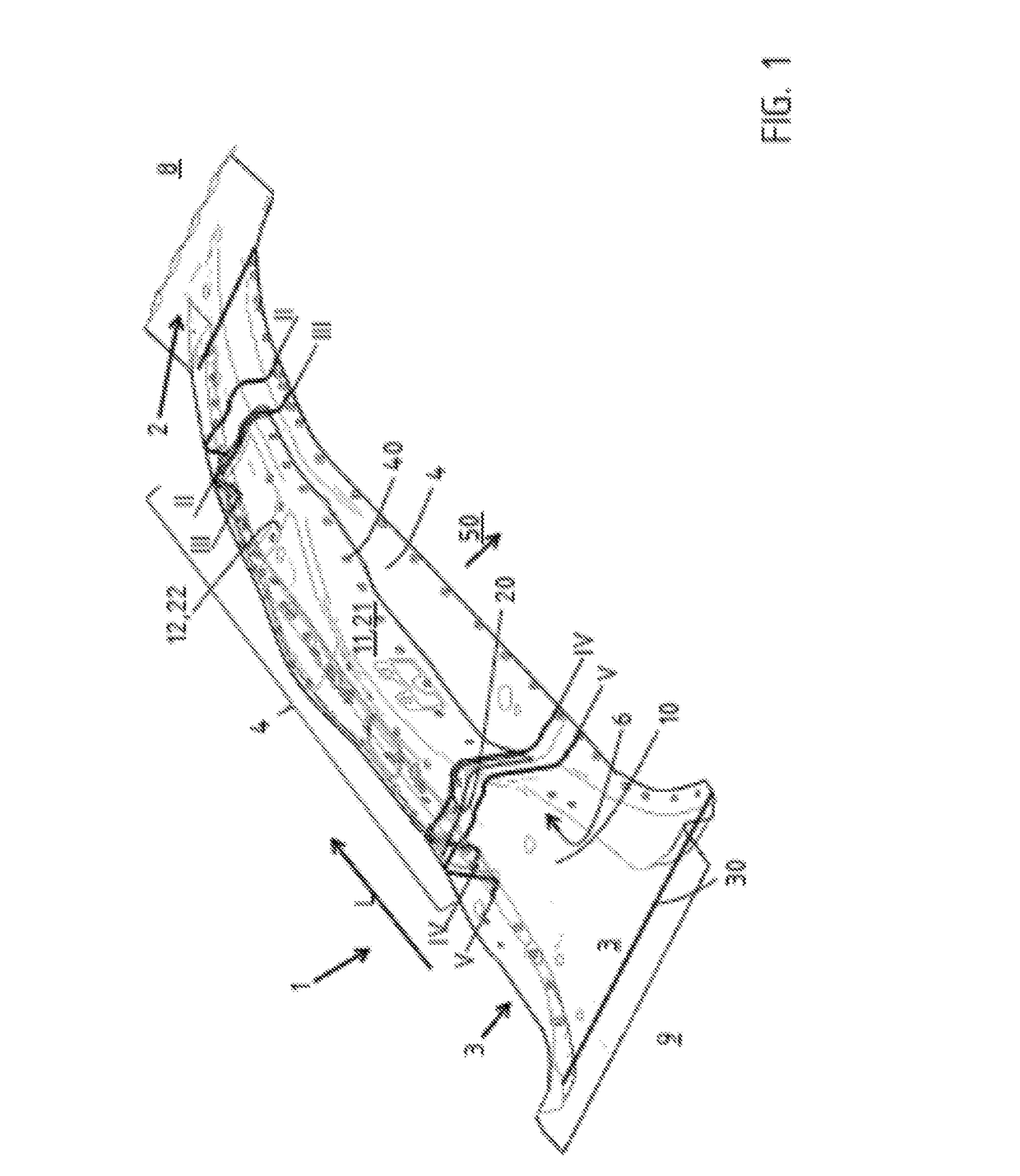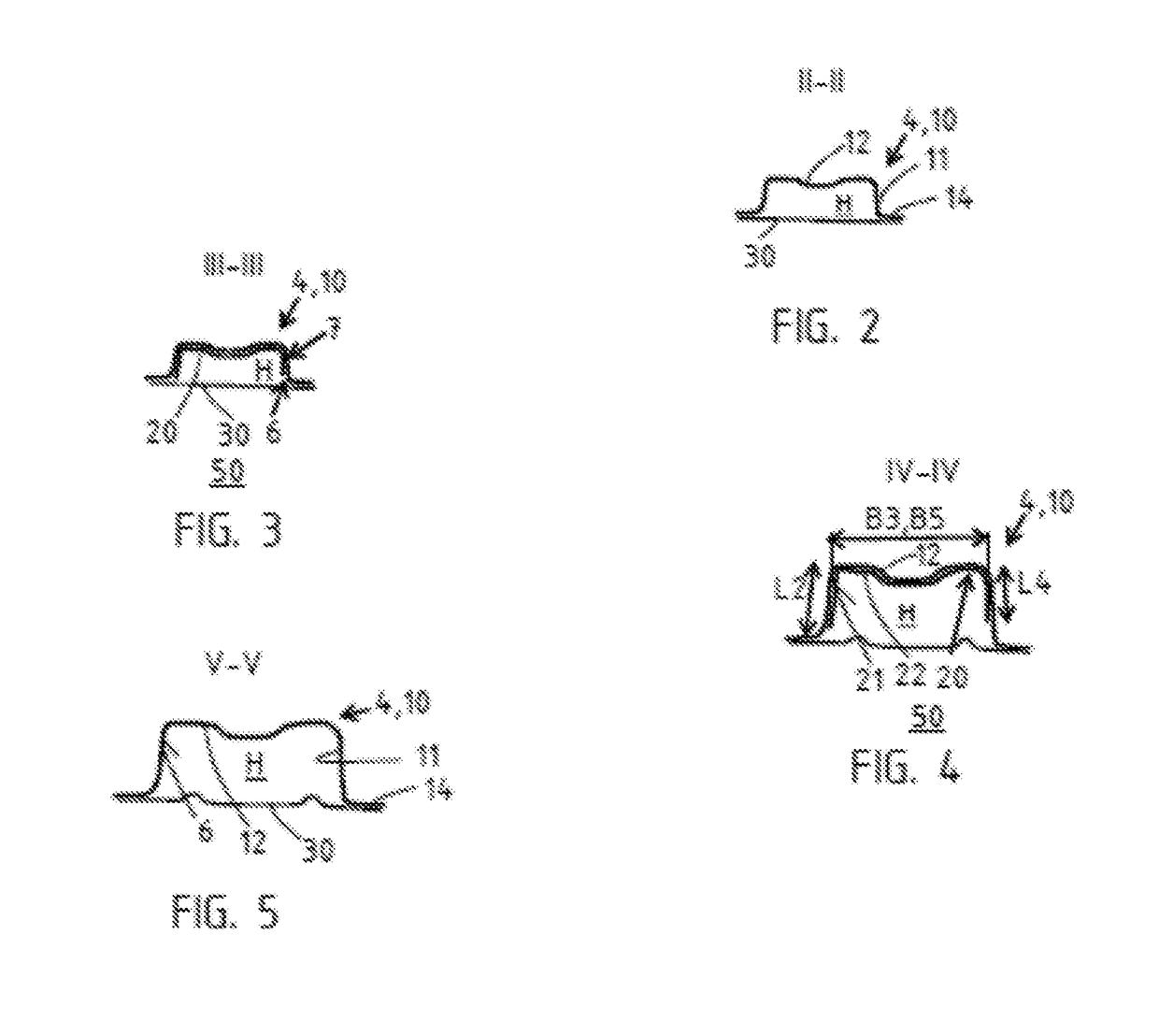Pillar for a motor vehicle and method for manufacturing a pillar
a technology for motor vehicles and pillars, applied in the direction of superstructure subunits, furnace types, furnaces, etc., can solve the problems of only limited wall thickness reduction, unavoidable zones can be affected, etc., to achieve the effect of ensuring weldability, reducing carbon content, and increasing bending angl
- Summary
- Abstract
- Description
- Claims
- Application Information
AI Technical Summary
Benefits of technology
Problems solved by technology
Method used
Image
Examples
first embodiment
[0051]FIG. 1 shows a first embodiment variant of the pillar 1 according to the invention. In the installation position, the pillar 1 extends from a sill (not shown) of a vehicle bodywork to a roof frame (not illustrated). The pillar 1 has an upper coupling section 2 at the roof-side end 8 and a lower coupling section 3 at the sill-side end 9 shown at the bottom in the plane of the figure. A central longitudinal section 4, which is formed with a U-shaped or hat-shaped cross section, extends between the coupling sections 2, 3.
[0052]The pillar 1 comprises a main element 10, in particular composed of a sheet-metal material, and a secondary element 20, wherein the secondary element 20 is connected here essentially over the entire surface to the main element 10. The connection is preferably made by thermal joining, wherein welding spots 40 are illustrated here between two limbs 11 of the main element 10 and two limbs 21 of the secondary element 20. The limbs 11, 21 are each connected by a...
second embodiment
[0065]FIG. 10 shows a second embodiment variant of the pillar 1 according to the invention. The pillar 1 extends in the installation position from a sill of a vehicle bodywork to a roof frame. The pillar 1 has a main element 10 with an upper coupling section 2 arranged at the roof-side end 8, and a secondary element 20 which extends downward in the plane of the figure, in the direction of a sill-side end 9, and a lower coupling section 3′. A central longitudinal section 4 of the main element 10, which is formed with a U-shaped or hat-shaped cross section, extends between the coupling sections 2, 3′.
[0066]The pillar 1 comprises a main element 10, in particular composed of a sheet-metal material, and a secondary element 20, wherein the secondary element 20 is connected here essentially over the entire surface to the main element 10 in the central longitudinal section 4. The connection is preferably made by thermal joining, wherein welding spots 40 are illustrated here between two limb...
PUM
| Property | Measurement | Unit |
|---|---|---|
| tensile strength | aaaaa | aaaaa |
| bending angle | aaaaa | aaaaa |
| tensile strength | aaaaa | aaaaa |
Abstract
Description
Claims
Application Information
 Login to View More
Login to View More - R&D
- Intellectual Property
- Life Sciences
- Materials
- Tech Scout
- Unparalleled Data Quality
- Higher Quality Content
- 60% Fewer Hallucinations
Browse by: Latest US Patents, China's latest patents, Technical Efficacy Thesaurus, Application Domain, Technology Topic, Popular Technical Reports.
© 2025 PatSnap. All rights reserved.Legal|Privacy policy|Modern Slavery Act Transparency Statement|Sitemap|About US| Contact US: help@patsnap.com



